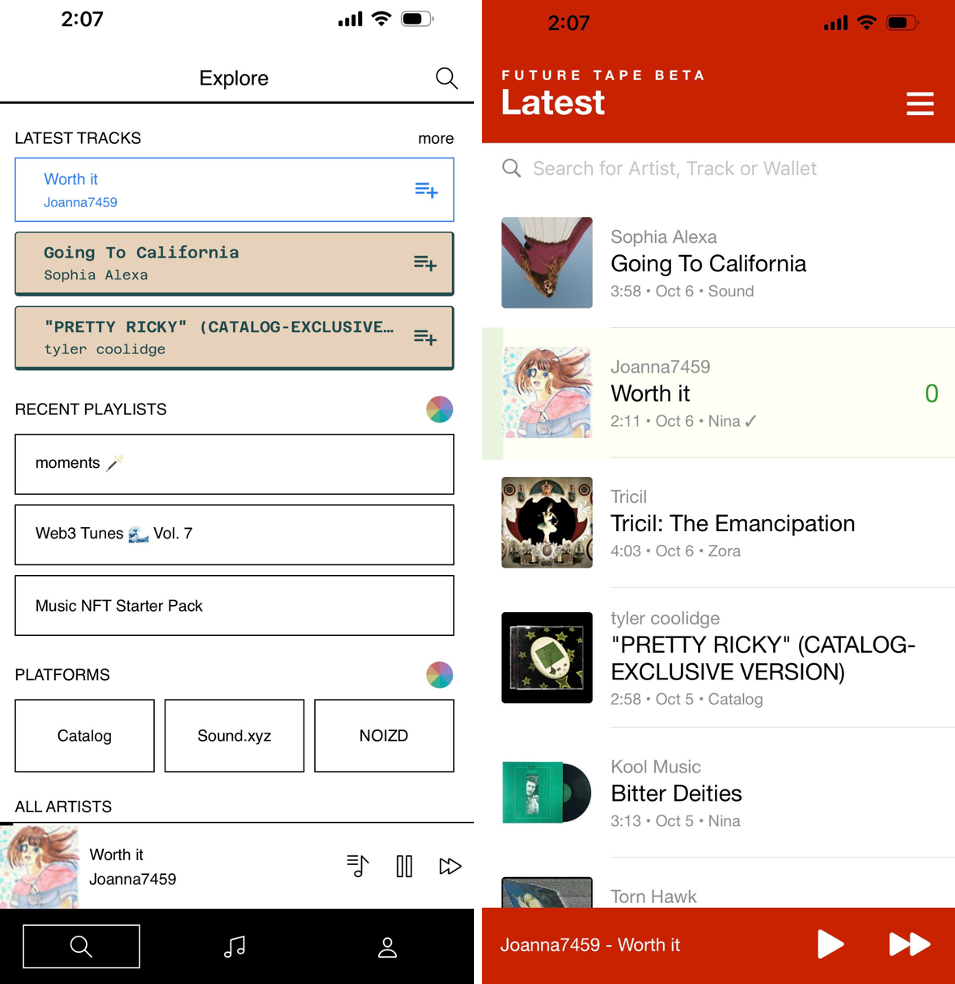Benefits of Web 3.0 Music
We previously published thoughts on what Web 3.0 music is all about. Below we go into more detail on the benefits of this new paradigm. Artists have more control over data, relationships with fans, financial contracts, and IP.
Transparent Data - When an artist publishes and distributes their music, by default the data is open and available. The artist can see what addresses have purchased, how frequently the music is streamed, how quickly their music is sold on the secondary market, etc. Music applications can easily build on top of these open APIs, widely sharing musicians’ work without extra work for the musician; this isn’t possible in the closed music system. On the surface, you might think sharing music for free diminishes the value of a musician’s work. But instead, it increases their reach, recognition, and sales. As music is discovered across applications, it grows a musician’s fan base and increases the chances that a fan purchases their music.
Below is an example of two music streaming applications, Spinamp and Future Tape, which pull from the same underlying data sources.

Source: Spinamp (Left), Future Tape (Right)
Elevated role of the curator - Applications don’t compete on what music they have because all of the music is published on an open blockchain (API). Instead, applications compete on curation; which algorithms can surface the best music for each fan? The role of an independent curator, such as a music blogger, is also heightened. By gaining a following and promoting music, curators can earn a distribution fee through an embedded referral link or simply elevate the value of the artists they collect.
Artist-fan connection - With transparent data, artists can have a closer relationship with fans. That can mean a variety of things from gifting new releases to airdropping concert tickets to the most loyal fans. By purchasing music on-chain, fans recreate the experience of buying a physical record. By owning the music, a fan can get access to data or experiences that are otherwise unavailable to non-owners. Streaming services offer compressed music quality and limited data ownership. iTunes and the like offer higher-quality music files but charge an exorbitant 30% fee on sales. There’s a lot of room for experimentation. Fans have better data rights, a stronger connection with the artist, and a financial contract that allows for a collector experience not possible with Spotify or Apple Music.
Financial contract - Artists can customize their financial contract. For example, listening to a music NFT could be free but buying it could grant access to a high-fidelity file. Drake has 65 million monthly listeners on Spotify. Maybe only a fraction of those fans choose to buy his music NFT but even at 5% penetration, that could be $3 million if pricing songs at just $1. Or maybe he prices at $20 and only .25% of fans care to buy a song. Whatever direction, the artist owns the monetization strategy.
Blockchain provides an opportunity for clear agreements that can serve everyone involved. Ownership of recordings and compositions can be clarified, streaming plays accounted for, royalties distributed, tickets issued, memberships governed, and collective workflows enhanced. We’re witnessing the evolution of agreements, which can strengthen trust, efficiency, and creativity. - Christopher Willits
IP - The artist can retain their IP and prove origination on-chain. The market does a good job of self-regulating by shaming bad actors in crypto. And due to its transparency, the blockchain record acts as evidence if an artist needs to dispute copyright in meat-space.
Summary
Web 3.0 opens new ways for musicians to experiment and capture value because it drastically reduces the cost and time required to publish and monetize music. If you are a musician or looking to innovate in the music space, please reach out.